This was published 5 months ago
Opinion
How to solve Australia’s housing crisis
Kevin Bell
Former justice of the Supreme Court of VictoriaAustralia is experiencing a housing disaster. There are too few affordable dwellings to buy or rent. Housing affordability in 2024 is the worst on record. Social housing has been run down for decades. Over 120,000 people are living with homelessness. Particularly affected are First Peoples experiencing the continuing impact of colonisation, women with children fleeing domestic violence, people living with mental illness and low-income older people, especially older women. Over multiple generations, a large proportion of the population is anxious about their housing, especially the young and those on low-middle incomes who face insecure or poor housing for life. Housing anxiety is why the “Great Australian Dream” is now frequently called the “Great Australian Nightmare”.
The baby-boomer generation, including myself, grew up in a very different era. I was born in 1954 to young parents who had eight children. Hundreds of thousands of houses were built by government that low-middle income families like ours could afford to rent or buy. We rented a basic three-bedroom weatherboard house from the Victorian Housing Commission in Moorabbin. Fittingly, in the language of the Bunurong/Boon Wurrung, “Moorabbin” means “resting place” or “mother’s milk”. My mother’s parents joined us in a bungalow built for a song in the backyard. As I grew older, it was my job to take the rent to the commission office just down the road. When government policy changed to allow sitting tenants to buy their homes at concessional prices, my parents did so, although they still called the money I took to the same office rent. I owe my family upbringing to social housing which working people like my parents could not now possibly get.
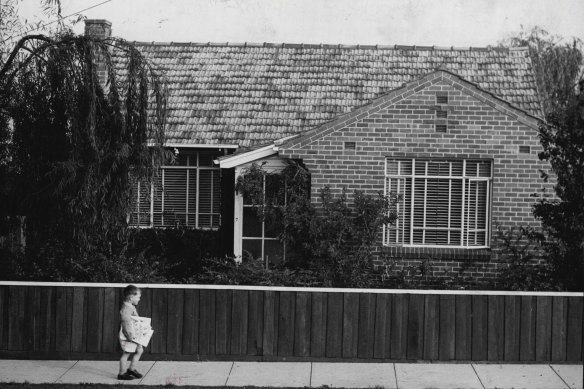
The Victorian Housing Commission built estates across Mebourne.Credit: Fairfax Media
Australia supports the Sustainable Development Goals adopted by the General Assembly of the United Nations in 2015 as an international plan of action to end poverty and to promote peace, prosperity and economically sustainable development. These goals “seek to realise the human rights of all”. Goal 11 is: “Make cities and human settlements inclusive, safe, resilient and sustainable.” The first target for that goal is: “By 2030, ensure access to all to adequate, safe and affordable housing and basic services.” Australia is not on target to meet this goal.
No future generation should have to live through a housing disaster like this. It has come from a system failure in which profit has been put before people. Housing has become primarily a commodity for investment. Governments have neglected their fundamental obligation to realise everyone’s human right to housing and home as the foundation of their personal, social and economic life. In Australia, government and policymakers tend not to think about housing in terms of human rights or they just mention them. Money and economics are the main frame or reference. This must change. Human rights are absolutely fundamental and must be taken seriously. What is needed is a shift in the values underpinning the housing system towards recognising a decent home as “The Great Australian Right”. Realisation of this right for everybody should be the primary purpose of the system; a legislative, rights-based national housing strategy is needed to bring this about.
The housing disaster in Australia affects all four parts of the system. The first is homeownership and, fair enough, it is the form of home that most people prefer. The trouble is that we have set up a system in which homeownership is out of reach for increasing numbers of people. This means that more and more are having to rely on the second part – private rental housing – for their home. But rents have skyrocketed so high that very few affordable dwellings are available and residential tenancy laws in most parts of Australia provide weak protection for tenants. Renting is seen to be second-class this country, and therefore we tolerate second-class legal protection. It is different in other countries where renting is seen to be one way of having a decent home and therefore gets decent legal protection.
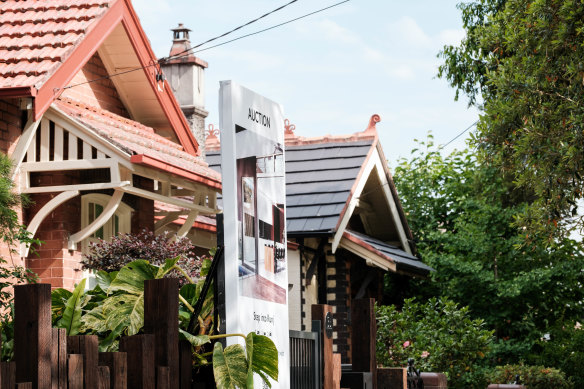
Australians tend to see homeownership as the ideal.Credit: Oscar Colman
You would think that the third part – social housing – would provide a safety net for ordinary people who can’t afford homeownership or private renting. Unfortunately, this is not how things now work. You have to be in a really dire situation to get social housing, which means (for example) being on government income support and having special needs. If you can’t get housing at all, you confront the fourth part of the system – homelessness – which exists at alarming and increasing levels in this so-called lucky country of plenty. The worst affected are First Peoples among whom the rate of homelessness are many times greater than other groups. Homelessness is an assault on human dignity, social inclusion and the right to life, and an impediment to First Peoples realising self-determination. It is evidence that national housing policy is failing because homelessness is caused by structural factures of the system as a whole for which government is responsible. We all but solved homelessness during the COVID years. Why not now?
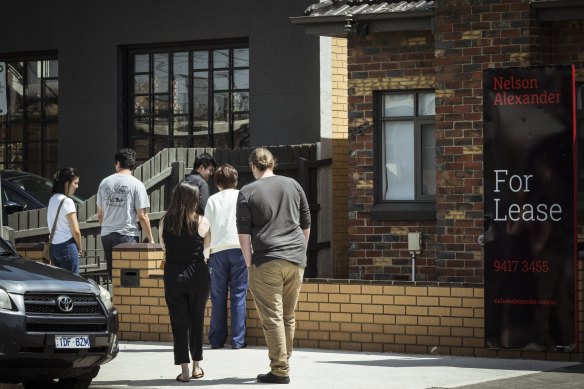
Renting is seen to be second-class this country, and therefore we tolerate second-class legal protection.Credit: Chris Hopkins
We are experiencing not only a socio-economic disaster. It is a human rights disaster. Decent housing is a pillar of the whole system of human rights. When the right to a decent home is put at risk or violated on a large scale, as it now is, this impacts a great many other rights. These other rights potentially include the right life, the right to health including mental health, the right to personal inviolability including the right of women to be safe in their own home, the right to be free of discrimination, the right to work a reasonable distance from home, and the right to be free of the many gross human rights violations that are associated with poverty, inequality of wealth, social exclusion and homelessness.
These rights are not mere aspirations or hollow theories. They really matter to peoples’ lives. For example, the right to life is not just a right to physical existence but to a life that can be lived decently and with dignity, to which adequate housing is indispensable. This is what people of my generation grew up with taking for granted and what young people growing up now fear they will never have, even with a good education and job and two people in a household working. It is what many older people dread losing because housing has become so unaffordable.
Mental health in Australia is so serious a problem that it has been examined by a royal commission in one state and received similar attention elsewhere. It is closely linked with decent housing because poor housing and homelessness produce or worsen mental health and harm the prospects of recovery. When you see frequently reported accounts of women fleeing family violence living with children in their cars, you are seeing reprehensible violations of their right to housing and especially emergency housing. Why are a staggering half of all retirees living in poverty? Very much because the system doesn’t respect their right to affordable housing, forcing them to pay way above what they can afford to keep a roof over their head.
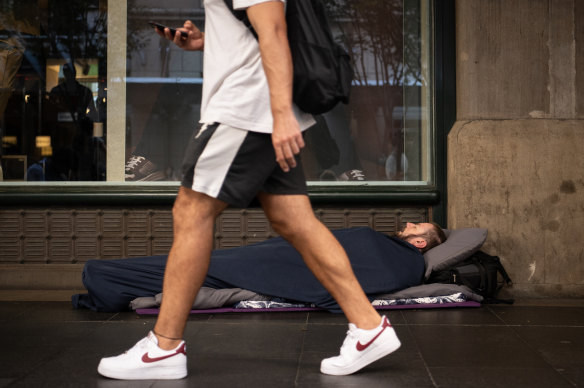
Homelessness is an infringement of human rights.Credit: Wolter Peeters
Young people in state care are too often discharged into homelessness on their 18th birthday; prisoners who enter prison as homeless are often discharged back into homelessness for this horrible, inhumane cycle only to continue. Why? Very much because the right to a decent home is seen to be someone else’s problem rather than a fundamental obligation of every part of all levels of government.
Examples like this could be endlessly and depressingly multiplied. It is common parlance to call the aggregate situation a “crisis”. Maybe that was a fair enough description a generation ago. But now it is obviously not just a blip in an otherwise well-functioning system. It is chronic. It has become the system. That is why we need a stronger word to describe what is unfolding. I have chosen the word “disaster”, but if it continues for much longer, it will be a catastrophe. And this terrible evolution will have been absolutely predictable and avoidable, all on our national moral watch.
There is still time to act, however. The enabling environment in the housing system needs to be fundamentally different. We can achieve this by placing human rights at its centre. This would require three things to happen. I am not fixed on the order but each is urgently necessary. We need comprehensive legislative human rights protection – which includes the right to housing – federally and in the states and territories. Only Victoria, Queensland and the ACT have such legislation now, and it does not include housing. This protection has to be comprehensive because the right to housing and other human rights are so interdependent.
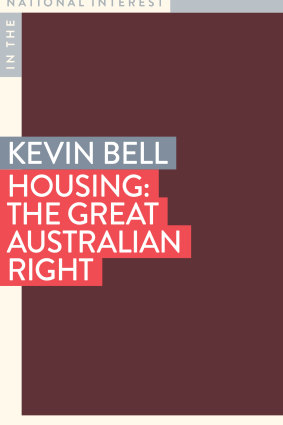
The cover of the latest In the National Interest series.
We need a national housing and homelessness plan to implement the human right to housing in every part of all levels of government. The plan can and should be flexible enough to respond to different and changing circumstances. As in Canada – also a federal country – it will have to respect the constitutional role of the states. But it needs to be underpinned by legislation – a purely policy-based plan would be second best because it would be too weak to transform the system in an enduring way, which is what is really needed to ensure it does not rise up to cruel the expectations of yet another generation. In relation to First Peoples, the plan – in formulation and content – must be based on the
United Nations Declaration on the Rights of Indigenous Peoples, especially the right to
self-determination.
We need residential tenancy to be rehabilitated as a form of housing for those who chose or have to have it. This should be done by residential tenancies law reform reflecting that the right to housing for tenants includes secure and safe housing with affordable and predictable rents. In particular, the scourge of eviction without just cause, still lamentably available to landlords in most Australian jurisdictions, must be ended.
Kevin Bell is a former justice of the Supreme Court of Victoria. This is an edited extract from Housing: The Great Australian Right published by Monash University Publishing as part of the In the National Interest series, available from August 1.